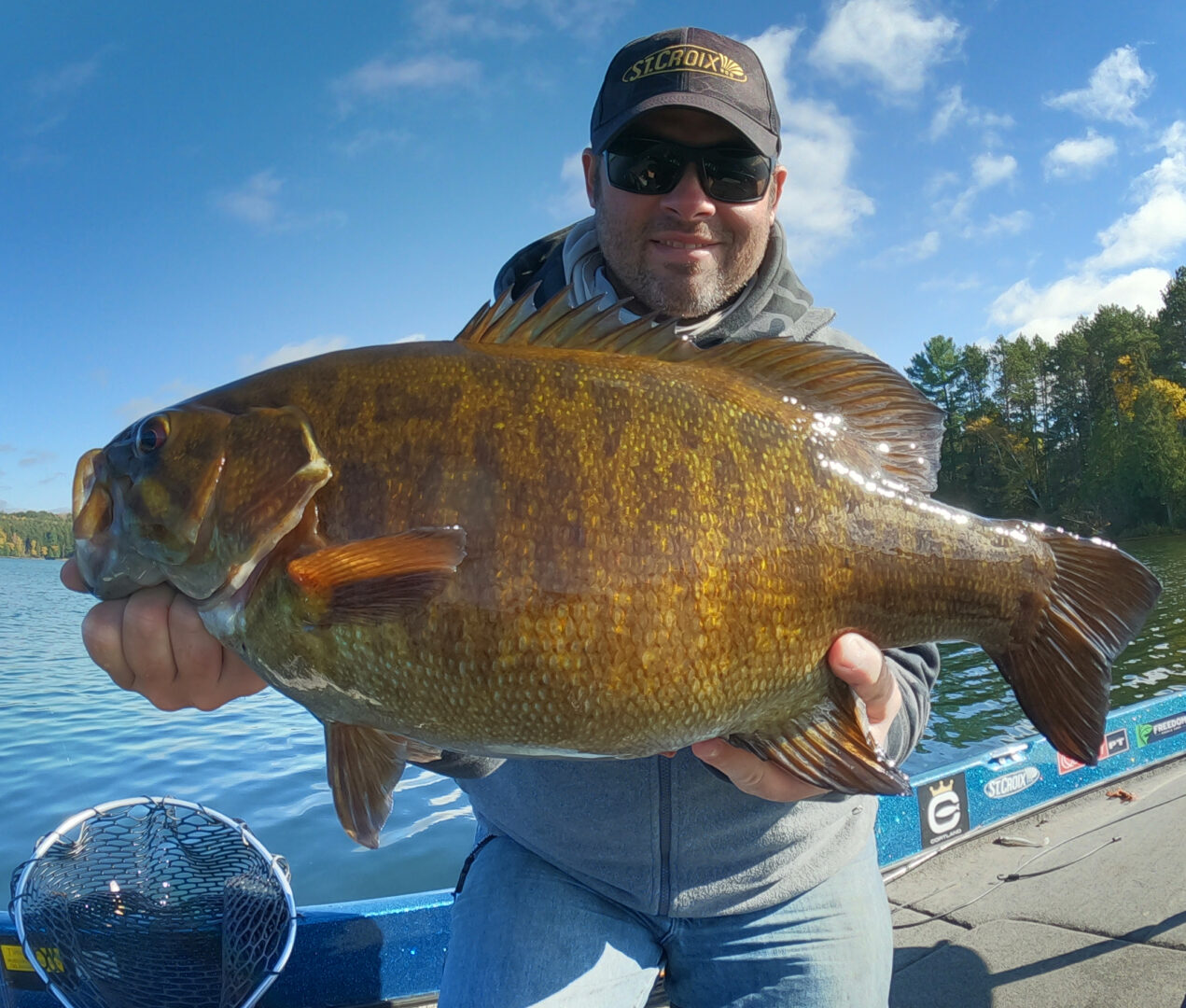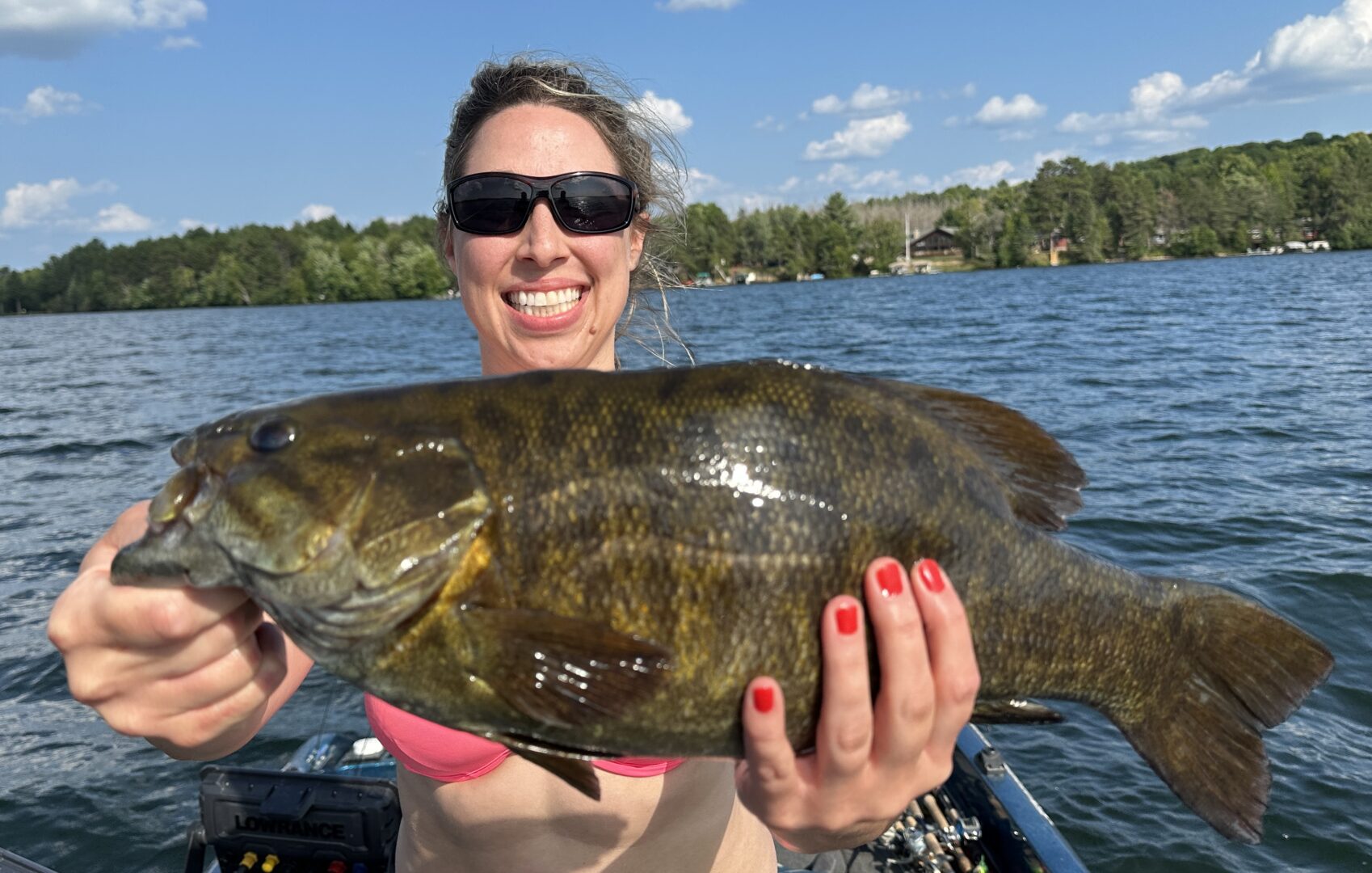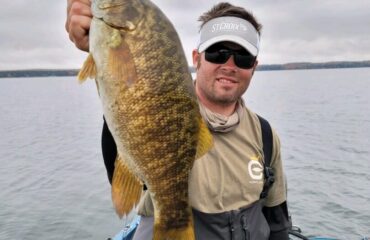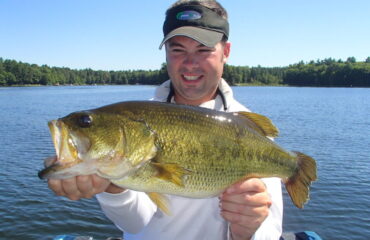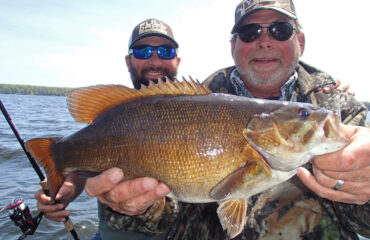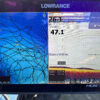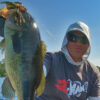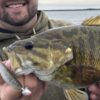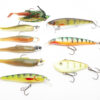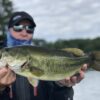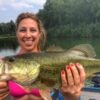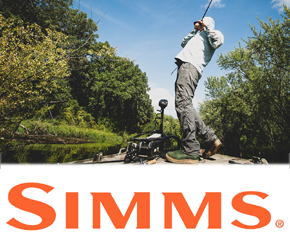So You Want to Catch a Monster Smallmouth in Wisconsin?
Want to catch a trophy smallmouth? Here’s the procedure to help make your dreams a reality.
On lakes that are known for their trophy fish production, and whether expected or not, monster smallmouth can be captured at any time. It’s crucial to be focused and prepared for the moment no matter what.
With northern fisheries managed for, and regularly producing, bass weighing 5 pounds or more, the opportunity to catch a giant has never been better in the history of many fisheries. It’s taken the past 20 to 30 years for majority of them to develop.
Be on the Right Waters
The first assignment for this challenge is identifying the true trophy bass lakes that have viable populations of smallmouths weighing 5 lbs. or more. Many inland northern waters throughout Minnesota, Wisconsin, and Michigan that are managed for trophy fisheries, and have special management regulations, qualify in this respect.
State DNR’s can provide lists and lake survey records of the best trophy bass lakes in their states. Wisconsin and Michigan do a good job of this, publishing their data online. However, anglers need to do further homework and process this information carefully. Be mindful that if the lake has fishable populations of trophy bass, many large individual fish will be recorded in surveys. This data provides insights into the lake’s population estimates.
Every lake with public access is managed for different purposes and fishery goals. Trophy smallmouth fisheries are specifically managed under special regulations for big fish and to purposely maintain the lower population densities that are necessary in supporting them. On these types of lakes on my home waters of Wisconsin, average fish captured are 18 inches and better, but catch rates are far fewer in number. Bass are not the dominant and most abundant gamefish in the lake, and their special regulations only exist for maintaining their low number, controlling aquatic invasive species such as rusty crayfish and rainbow smelt, and helping better maintain walleyes. As a result of their management, special regulations fisheries seldom produce numbers, but highest odds for monsters.
Trophy hunters should plan to fish lakes that have a history of producing 6 pounders. Surveys can help reveal their identities, and easier yet the carelessness by word-of-mouth from other anglers and social media.

Right Time, Right Place
An interesting characteristic of trophy bass lakes is that historically every water body has areas that consistently produce big fish. This is true across several destinations. Before investing the time and effort for a trophy, be aware that big fish spots exist. Their locations will be quietly revealed the more you trophy hunt.
Trophy hunting requires thoroughly and repetitively fishing specific spots and general lake regions. This could be one of the many reasons to hire a guide.
Out on your own, you might not be able to quickly identify big fish spots. Fishing strategies and lure selection might not be compatible for the lake choice either. Additionally, you might also struggle locating pelagic baitfish and understanding the specific lake’s smallmouth feeding tendencies and habits.
A qualified guide will approach his trophy bass waters with great knowledge, connections to the fishery, and intimacy. A good bass guide even goes further by instructing where exactly to cast so that his clients can land atop one of his waypoints in hopes that a large fish is at home. Trophy smallmouths have been caught under this instruction in my boat.
To achieve your goal, there is no one size fits all pattern and strategy. Every specific fishery could require a unique bag of tricks. Having identified trophy capable waters, understanding them, knowing the preferences and behavior of its big bass, and identifying these trophy fisheries will lead to highest probability of catching one.
Be mindful of several other possible variables that will help shape your obsessions and trophy hunting success. On the waters you’ve identified, I’m sure there’s many you should look at. Such could relate to perfect timing and capitalizing on peak periods, windows, and forage species and availability, to name a few.
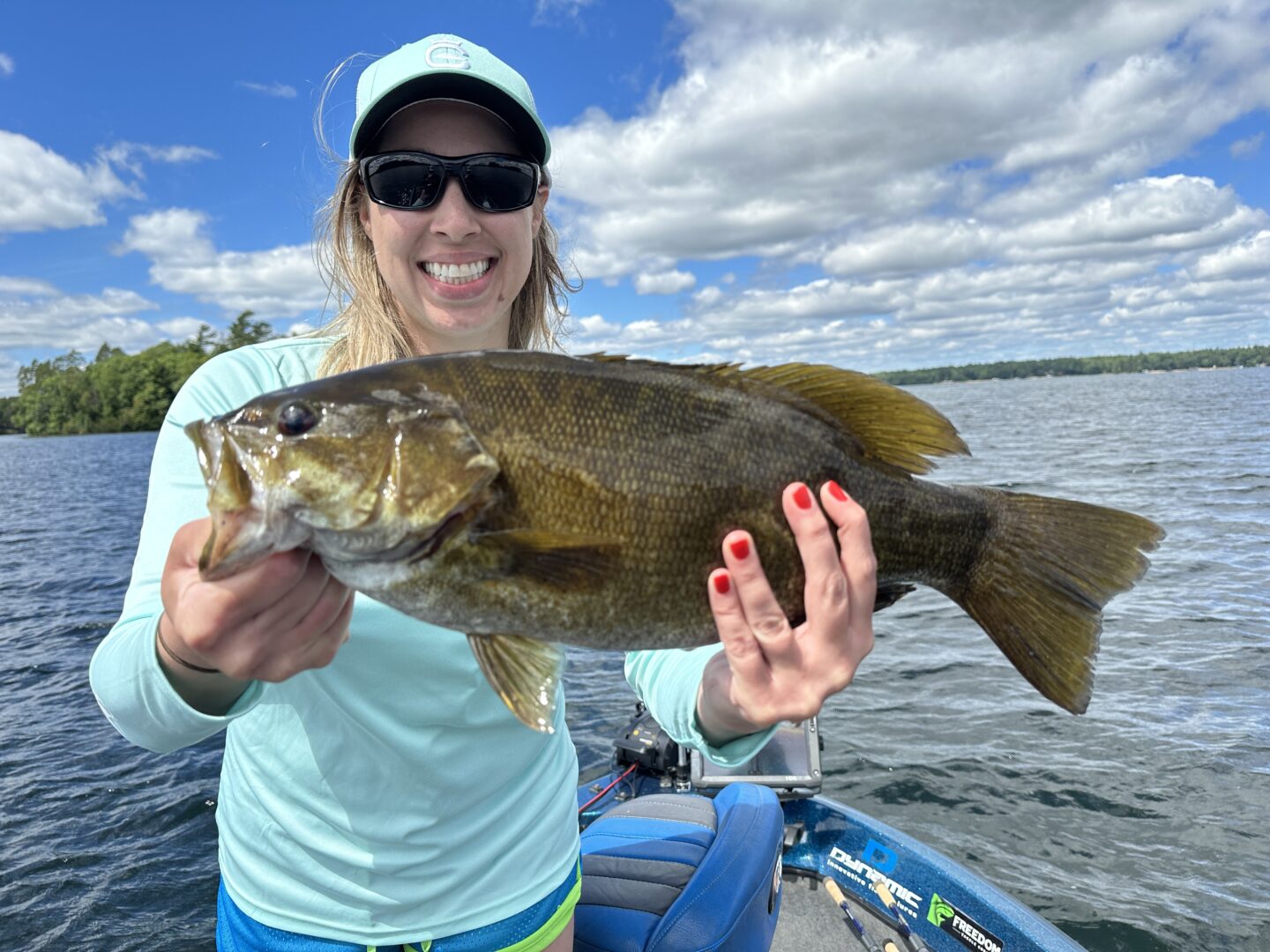
Right Expectations
An angler’s attitude, and whether or not he’s come to the lake with the right expectations, is the necessary superpower to hooking and landing a beast on any lake.
Big bass do not and will never jump into boats. Likewise, fishermen rarely ever get chances for smallmouths weighing 6-pounds or more. You have to concentrate, and it might have to be attempted over the course of several days before a fish is ever registered.
My prerequisite for trophy smallmouth is giving time. It’s a luxury that most don’t have. Most trophy seeking customers request a minimum full day trip which I recommend for singular water, while others multiple days.
Mental preparedness goes far as well. Once a big fish is hooked, they cannot be played tentatively. Take charge and control them until being landed. Otherwise, you are guaranteed to lose them. Lost fish and heartbreaks become painful memories.
Even when the day’s outlook is grim, expect catching one. Treat every cast as if your magic moment is going to happen at any time.
To date, my boat and its anglers have caught more than 2-dozen smallmouths over 6 pounds from inland lakes. Hawg hunting takes a lot of patience, concentration, thorough planning, the right mentality, and the required investment of spending long days on the water. This expert style of fishing is not for everyone.
